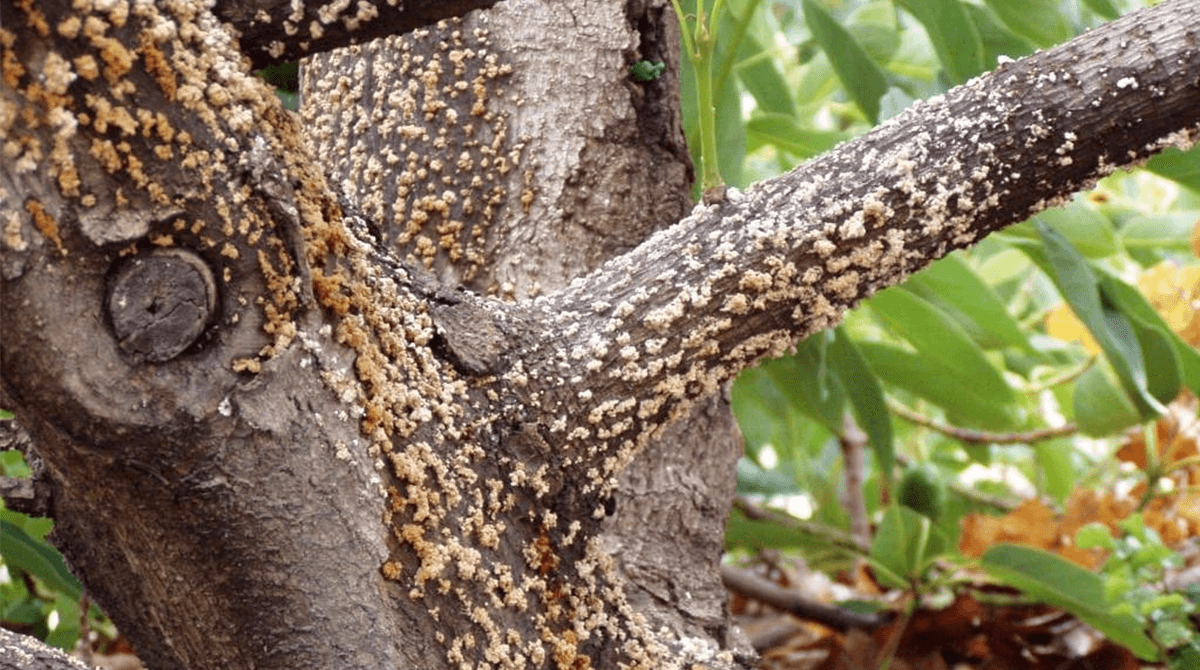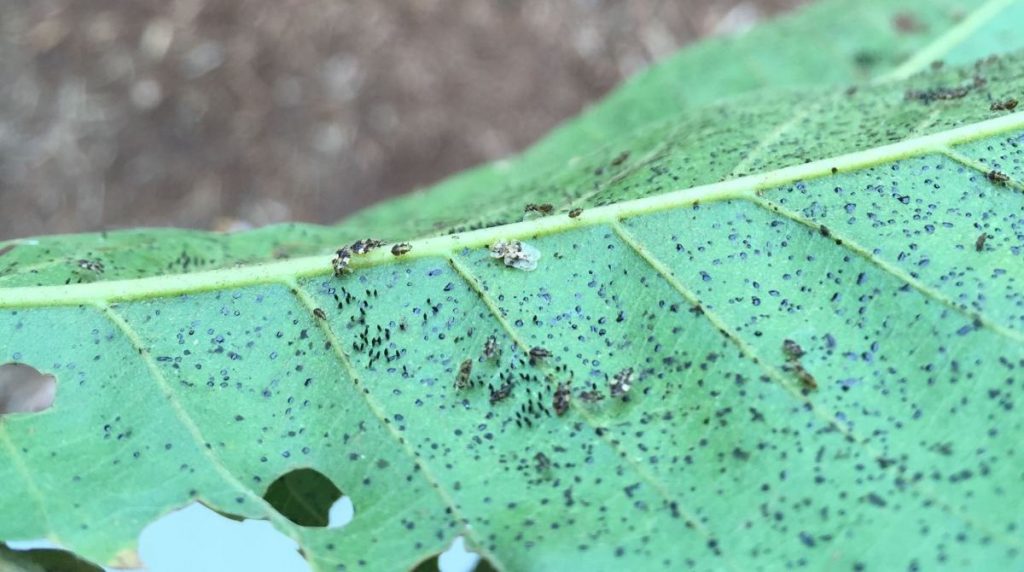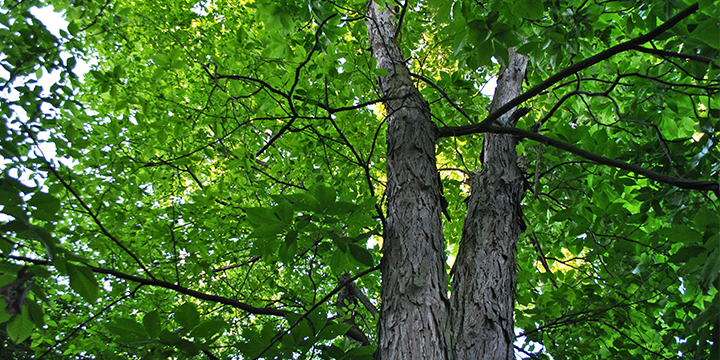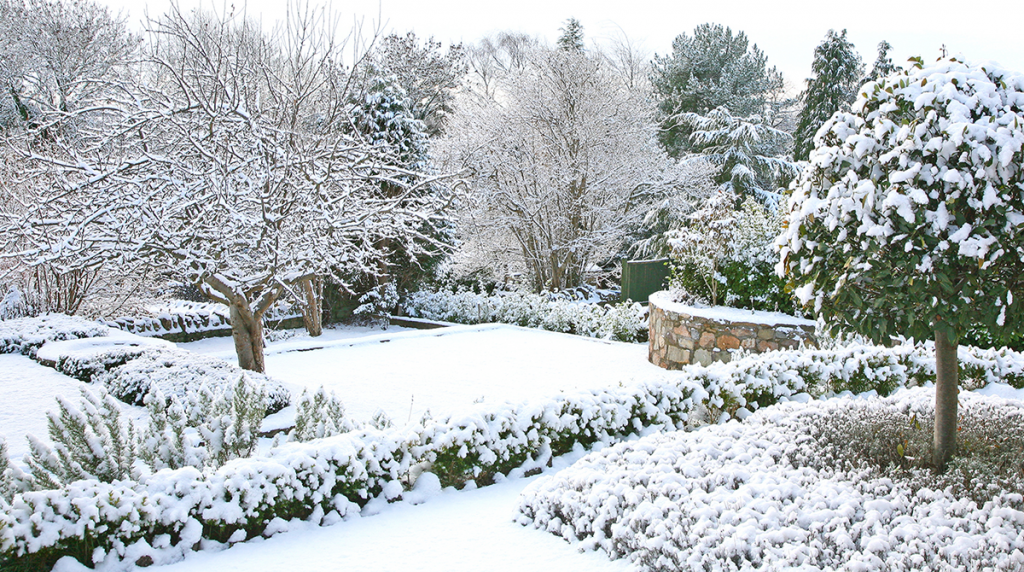
Date April 02, 2021
Category
North Texas is home to a wide variety of beautiful hardwood trees, and we love our trees for almost as wide a variety of reasons. But like all living things, sometimes trees get sick. Below are five of the most common deadly hardwood tree diseases and what to look for so you’ll know how to spot them if your beloved tree is sick or dying.
Armillaria Root Rot
Armillaria Root Rot, also known as Mushroom Root Rot or Oak Root Rot, is considered one of the worst tree diseases. It attacks hardwoods, softwoods, shrubs, and vines throughout the United States and is a significant cause of Oak decline. Armillaria Root is a parasitic fungus that is most deadly to hardwood trees that have already been weakened by pests or other environmental or climatic factors. When the fungus attacks a healthy tree, it will kill or make the tree vulnerable to other diseases or pests.
- What it looks like: Armillaria Root causes wood decay and growth reduction. If those symptoms escape your notice, you might notice some mushrooms growing at the tree’s base. Peeling back the bark will reveal a white fungus, which is the disease’s defining characteristic.
- What to do: Unfortunately, there’s no quick-and-easy treatment or cure for Armillaria Root Rot. The best thing you can do for your hardwood tree is to boost its health through proper tree health care practices like routine tree trimming and pruning, soil conditioning, and supplemental watering. If you catch Armillaria Root Rot early, you might be able to control the disease. If not, the best you can do is control its spread through tree removal.
Oak Wilt
Oak Wilt Disease is considered one of the biggest threats to our North Texas Oak trees. Typically this disease affects Red Oak and Live Oak trees in our area, but it can infect any Oak trees. Once the fungus infects a tree, it invades and cripples the tree’s water-conducting systems and kills the tree, sometimes as soon as six weeks after infection.
- What it looks like: It first appears as fungal spore mats in the Spring, which smell sweet and attract the sap-sucking Nitidulid Beetle. Nitidulid Beetles spread the disease by carrying the spores to nearby trees. Oak Wilt can also be spread by root-to-root contact. You might also notice your tree’s leaves wilting and turning bronze while remaining on the tree.
- What to do: Improper pruning or pruning from February through June when beetle activity is at its peak can make your Oak trees more susceptible to Oak Wilt, so avoid pruning during that time. If you think your Oak Tree might be suffering from Oak Wilt, call a certified arborist tree service immediately. Our ISA Certified Arborists are specially trained in Oak Wilt prevention and treatment, so call us today for an appointment.
Anthracnose
Anthracnose Disease is a term for a group of hardwood tree diseases that cause lesions on the leaves, the branches, or the fruit. Although their effects are generally cosmetic, they can cause serious damage to some trees, such as American Sycamores, Black Walnuts, Dogwoods, Ash trees, and trees within the White Oak group. Anthracnose will stay on infected leaves all winter and reinfect the tree in the spring. If your tree experiences repeated annual defoliation, it can weaken the tree and make it vulnerable to other diseases or pests, which will eventually kill the tree.
- What it looks like: The most common symptom from this group of diseases is irregular brown or tan blotches on the leaves and early leaf drop.
- What to do: These diseases are generally caused by cool, damp conditions. Trim away any heavily infected branches and gather up dead leaves to prevent reinfection in the spring. Any time you think your tree might be sick or need immediate tree services, you should call a professional tree care provider for help.
Dutch Elm Disease
American Elms were once prevalent throughout the United States and Southern Canada until the early 1900s when a virulent strain of Dutch Elm Disease arrived on our shores and devastated our Elm population. By 1989, the disease had killed more than 75 percent of the Elms in North America, and it had also wreaked havoc on the Elm population in Europe. Today the Elm population in the United States is on the rise again, largely thanks to cultivars resistant to Dutch Elm Disease. However, for American Elms and other Elm trees, Dutch Elm Disease is still a real threat.
- What it looks like: You’ll notice the leaves on individual branches will wilt and turn yellow, or sometimes the leaves will wilt quickly, then dry out and fall off the tree while still green. Some branches may curve or show discoloration.
- What to do: Remove any infected branches and dispose of them properly. Call an ISA Certified Arborist immediately if you suspect your tree has Dutch Elm Disease, although if the tree is too infected, it might need to be removed. TreeNewal can help with tree care or tree removal, so call our tree doctors at your earliest convenience.
Cotton Root Rot
It wasn’t too long ago that many of the areas surrounding Dallas-Fort Worth were agricultural lands. Of course, that changed over the years as fields and farms increasingly became urban sprawl. But even though the landscape evolved, some soilborne fungi have remained dormant in the soil for many years. One of those is Cotton Root Rot, which was once a big problem for cotton crops, and is now a big problem for some of our trees in North Texas.
- What it looks like: If your tree is infected with Cotton Root Rot, you’ll probably notice wilting and discoloration in the leaves sometime in spring or early summer. You might also notice light-colored fungal mats, which will develop on top of the soil. These mats do not spread the spores; they merely indicate that the pathogen is present in the soil.
- What to do: The best way to protect your trees from this disease is to ensure that your tree is healthy and the soil has a proper balance of nutrients and soil biology. If you notice early symptoms, call a certified arborist immediately as specific soil treatments might be able to save your tree. However, if your tree is severely infected with Cotton Root Rot, it might need to be removed to protect other trees in the area.
TreeNewal’s ISA Certified Arborists can help.
If you think your hardwood tree might be sick or dying from disease, fungus, pests, or any other reason, our tree care experts at TreeNewal are available to help you. We have ISA Certified Arborists on staff and a team of highly trained and qualified tree care professionals. We offer expert tree care services such as tree pruning, pest and disease management, soil conditioning, root aeration, and much more. Our tree surgeons can also help with tree trimming and tree removal. We are equipped to safely dispose of any infected trees, branches, or stumps. For more information or to set up an appointment, go to our website at treenewal.com or call us at tel:(817) 592-6846.
To learn more about 5 Deadly Hardwood Tree Diseases, call our Argyle and Southlake-based teams
at tel:(817) 592-6846 or send us a message.
We’re a little different than the average tree services company.
Learn more about TreeNewal’s ISA Certified Arborists!
Our Dallas/Fort Worth-based tree doctors can explain how sustainable tree care services add more value to your bottom line.
Healthy trees, healthy lives.








